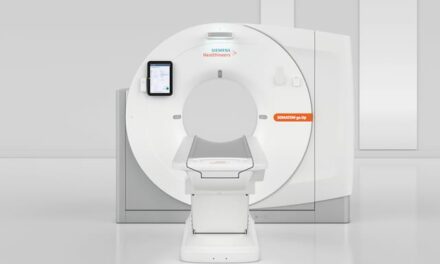 |
In a large-scale effort such as a hospital renovation, it is easy for details to get lost in the shuffle. Departments working under tight time and budget constraints may unintentionally overlook important issues—such as the placement of power outlets, plumbing equipment, and lighting fixtures—that can have an enormous impact on the delivery of care. Clinical engineers and biomedical equipment technicians, with their vast knowledge of equipment considerations, are uniquely suited to anticipating issues like these and can play a vital role during the planning stages of a renovation.
While biomeds may not have the last word in the decision process, their recommendations go a long way toward influencing the outcome. “I see the real importance of biomed professionals being actively involved in design user meetings,” says Kelley Garland Irving, MBA, a clinical engineer who serves as an equipment planner for RTKL Associates Inc, Healthcare Technologies, Dallas. “Biomeds are in a unique position where they understand the clinical application of the equipment and also the technical aspects of the equipment. So, they are a really good advocate for the caregiver.”
Get Involved
A successful renovation project depends on constant communication among all departments involved. In addition to biomeds, planning committees generally include hospital owners, administrators, plant engineers, nursing personnel, IT managers, and purchasing representatives, as well as architects, contractors, and consultants.
Depending on the size of the project, clinical engineers may have an expanded role. For new builds and larger efforts, architectural firms often steer the project. In the case of a smaller renovation, however, clinical engineers will have a larger consulting role when working with the plant engineer in charge. “In either case, clinical engineering is an integral part of the planning committee, often in explaining the technology or providing input on new technology available,” says Frank E. Nickells, Jr, CBET, clinical engineering support manager for Catholic Health Initiatives/Centura Health, Englewood, Colo.
 |
As part of the renovation team, biomeds also play an important role in keeping the project on schedule. This means doing their homework in advance, which allows other departments to meet their goals as well. “You’ve got to keep your schedule ahead of theirs,” Nickells says. “Some-times it requires being on-site, looking at progress, and working with the manufacturers.”
It may even require interfacing with marketing departments, which will need to announce the launch of new technology, such as digital mammography screenings, to the public in a timely manner.
Maintaining open communication and attending all of the required meetings allows biomeds to keep abreast of changes that might influence other decisions down the road. For this reason, biomeds should also be involved in construction meetings, when possible. This will help ensure that systems for nurse call and sterilization—to be built into the walls, for example—are properly planned. “If biomeds can’t be involved in the construction meetings, they should be reviewing the meeting minutes for any issues that may have an impact on equipment,” Irving says.
Participating in these meetings allows biomeds to coordinate with the architects and troubleshoot potential problems early. “We help the architect understand what equipment is going to be in that room so that they can properly plan for the correct amount of services such as med gas, electrical, and data,” Irving says.
This means accounting for the dimensions and weight requirements for a device, making certain that the space is adequate to accommodate the desired equipment, and incorporating enough power outlets with the right amount of power. Biomeds also make mechanical, ventilation, plumbing, and electrical recommendations, such as where to place ceiling-mounted booms and lights so that these elements are in the most convenient places for caregivers. “We really try to get those decisions up front as much as possible,” Irving says.
Of course, with the connectivity demands of today’s medical devices, IT plays a much larger role in equipment purchases than ever before. IT personnel can alert biomeds to networking issues related to equipment, such as properly supporting infusion pumps wirelessly. “We’re really having to understand more how the equipment interfaces with the IT system in the hospital,” Irving says.
IT departments also have vital information about security and cabling issues that can affect equipment compatibility and functionality, and discussing these concerns in the planning phase helps biomeds when researching equipment. “We’re becoming more dependent on each other as time goes by,” Nickells says.
To keep everyone on the committee on the same page, Irving also involves vendors in the planning stage. “I coordinate vendor meetings with the design team to make sure that we understand the vendor drawings and that everyone on the design team understands what is needed,” she says.
During all planning meetings, biomeds should be attentive and assertive. “If something doesn’t seem right to you as a biomed, definitely raise the question, because it probably is something that needs to be asked or addressed,” Irving says.
Clinical and biomedical engineers also need to anticipate any questions and concerns the committee may have about their opinions. “They need to take a forward look and be prepared to back their advice,” Nickells says. Using the data collected during the research process will bolster a biomed’s recommendation.
Weigh the Options
Choosing equipment for a hospital renovation means trying to accommodate the requirements from all departments involved while balancing strict time and budget constraints. “Clinical engineering is a very important part of the team because you are talking about what is going to be happening in a hospital for the next 15 years, and a lot of equipment is going to be there for that length of time,” Nickells says. “So, you don’t want to make mistakes in the beginning.”
For CEs and BMETs, the first concern is finding a high-quality device that will provide patients with an excellent level of care. “We don’t want to buy the cheapest product,” Nickells says. “We want to buy the best product. But we want to get it at a good price.”
While it can be more comfortable to continue going back to the same vendor, Nickells cautions that another manufacturer may actually offer a superior product—making the research of several products important. How-ever, the standardization requirements from your hospital, such as the network configuration, may limit your options, so working with IT from the beginning will identify those standards.
Network-compatibility issues may lead to conflict with physicians who have fallen in love with the functionality of a device that just won’t interface smoothly with the rest of the hospital’s equipment. “Sometimes we have to be the bearer of bad news and say that unless you can show where that device does something far greater than the standard device, we’re going to have to go with the standard device,” Nickells says.
If a hospital invests in the device anyway, health care professionals may not have access to all of the features they expected. “They want the functionality of that device as it’s been advertised,” says Luke Slymen, president of Irvine, Calif-based Embee Technologies Inc, which has provided IT support, structured cabling, and wireless services for hospitals in Orange County, Calif. “That’s why it’s really critical that [biomeds] work with their IT department and the IT department’s vendors to ensure that it’s going to comply with the security and environmental requests that they have.”
The budget represents another point of conflict. Often, health care providers have their hearts set on equipment that hospitals simply cannot afford. That said, price tags should not be the main focus of a biomed’s initial research, because the purchasing team may secure a better price from the vendor. “Our capital equipment manager for purchasing does not put me into the money loop when it comes to looking at the technology,” Nickells says. “She wants me to look at the technology to assess which is best. They’ll work on the dollar end, because they have the negotiating skills that clinical engineering doesn’t.”
Typically, after researching equipment options biomeds report back to the committee with their recommendations. “The people that are in purchasing are basically buyers, and they don’t necessarily understand the differences between two brands of equipment or two different devices that may seem similar,” Nickells says. “So, you’re really the person explaining what the differences are and what the device does.”
As part of the purchasing process, supply-chain management personnel and biomeds work more closely together than before, and Nickells believes this trend will continue. For example, at Catholic Health Initiatives, a network of 70 hospitals, the corporate purchasing staff also includes clinical engineering personnel. Nickells says this office recently purchased 18 64-slice CT machines based on recommendations from clinical engineering.
Whether helping a hospital purchase one piece of equipment or outfit a new renovation, it is important to follow up with users after completion to gauge their satisfaction with the products. “The administration and caregivers you begin your equipment planning with may not be the actual team moving into the facility,” Irving says. “The staff that actually moves into the facility may have a different take on what they want. So, that sometimes can be challenging.”
Not only does collecting feedback help troubleshoot issues with a particular device, but it also sets a precedent for future purchases. “We’re now developing a program to look at postpurchase—did we do the right thing?” Nickells says. “We have a whole review process with physicians, users, clinical engineering, and IT service personnel.”
He adds that the 12 hospitals he works with in the Centura group often benefit from this type of questionnaire. If the group purchases one successful product for one of the hospitals, chances are they will choose that same device for the other 11 when the need arises.
Stay Prepared
Even if a hospital does not have a renovation project on the horizon, biomeds can take steps to stay ahead of the game by attending trade shows to keep abreast of the latest medical technology on the market. “I attend meetings such as AAMI [Association for the Advancement of Medical Instrumentation], AORN [Association of Perioperative Registered Nurses], and RSNA [Radiological Society of North America] to keep my preparatory education up,” Nickells says. For example, if a hospital is interested in an imaging system device, a biomed can see it firsthand alongside its competitors on the exhibit floor. If the system does not come up to par, the biomed will have plenty of information from the show to support that finding and recommend an alternative.
|
Planning a renovation? Read how consultants can help in the September issue of 24×7. |
 |
Keeping the communication lines open between the clinical/biomedical department and IT personnel remains a priority. Having regular meetings between department heads can go a long way toward building that relationship, and it will also help keep biomeds on top of network constraints and other factors to consider during the next equipment purchase. No matter how large the project, taking the right steps early on ensures a smooth renovation that will have a positive impact on the facility for many years after completion. “It has to be a team effort today in order to keep on schedule, to get good pricing, and to get your projects done,” Nickells says.
Ann H. Carlson is a contributing writer for 24×7. For more information, contact .
IT: What You Need to Know
Today’s medical equipment not only requires compatibility with hospital and caregiver needs, but it must also interface correctly with the hospital’s information network so that relevant data can be transmitted successfully from one device to another. An awareness and anticipation of IT needs and networking issues that affect renovation planning will help avoid costly errors.
“From here forward, almost any electronic medical device is going to have an Ethernet port on it,” says Luke Slymen, president of Irvine, Calif-based Embee Technologies, which has provided IT support, structured cabling, and wireless services for hospitals in Orange County, Calif. “Almost anything that you can think of now going into a hospital is going to have the capability to be connected to a common network.”
When implemented properly, this new technology goes a long way toward improving patient care and hospital efficiency. However, the networking demands add a layer of complexity that many members of a renovation planning committee may not have considered. Not all of IT’s concerns overlap with those of biomeds, yet having a solid understanding of these issues can help biomeds interface with planning committees that may not have considered how wiring configurations can make or break a successful renovation.
 |
Cabling Concerns
Proper wiring for data and IT support often falls by the wayside during renovation planning—and the results can be catastrophic. Rob Clement, vice president of Embee Technologies, says that, despite his warnings, one of his clients neglected to add a backbone cable to support the hospital’s data center. “They’ve actually lost service to the hospital several times and lost connectivity to other floors because of the nonability to reroute those cables,” he says.
Cabling is something most hospital personnel take for granted, especially because it is generally located out of view within the walls. But in projects where new walls are involved, the wiring and cable management often have to be designed from scratch. With more devices requiring connectivity, more cables are needed—and that means hospitals need to devote more space to accommodate them, including dedicated closets and larger areas between floors. A common mistake is not allowing for enough space between floors, which means a tight squeeze. “We can get the cabling in during construction, but anything in the future is going to be very costly,” Clement says.
Even wireless technologies require space considerations. “The newer switching and routing equipment generates more heat and takes more power,” Slymen says. This means planning committees need to make room for cooling systems, fire-suppression systems, and other power-protection measures, not to mention the switchers and routers themselves.
Security Standards
Not only do IT personnel play a role in ensuring that future equipment purchases are compatible with existing devices and network connectivity, they must also consider security risks. With standards boards such as The Joint Commission and regulations such as HIPAA requiring strict patient privacy guidelines, it is critical that all equipment that transmits sensitive data can do so securely.
Unfortunately, not all manufacturers have caught up to these regulations. “A lot of manufacturers still don’t manufacture their wireless equipment to comply with the latest security standards,” Slymen says. Without proper precautions from IT, these types of devices could be hacked by an outsider.
Many hospitals have their own sets of security standards, and it is important for both IT personnel and biomeds to be aware of these parameters when integrating new equipment. Some hospitals even have a dedicated security office or officer to keep abreast of these issues. Holding regular meetings with the security representative, IT personnel, and biomeds helps keep everyone on the same page. “It’s critical that before hospitals select equipment, they work with their IT department and the IT department’s vendors to ensure that it’s going to comply with the security and environmental requirements they have,” Slymen says.
He also recommends implementing a thorough IT procedure from the beginning to ensure that all of these issues are well documented. This includes phases for preparation, planning, design, document implementation, pilot testing, and feedback solicitation. This way, hospitals can guarantee that all major IT concerns are addressed.
Strengthening the relationship between biomeds and IT personnel can promote education and the financial success of the renovation. “Biomed technicians and other practitioners in the hospital need to communicate more with their own IT department,” Slymen says. “It comes down to following a proper procedure when implementing any new IT project.”
—AC





